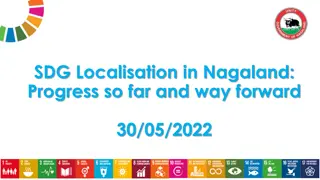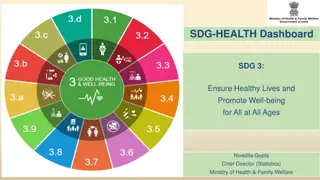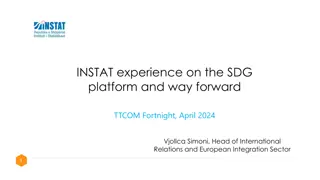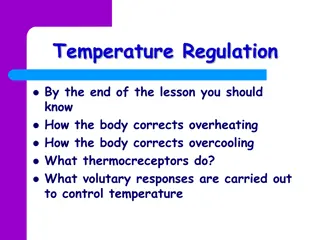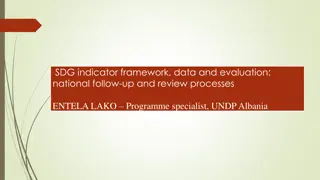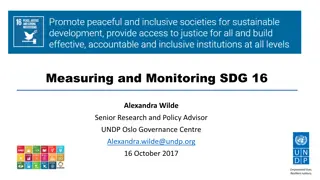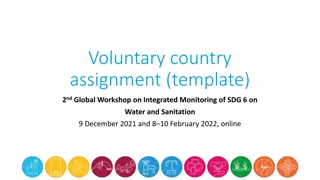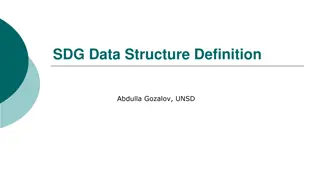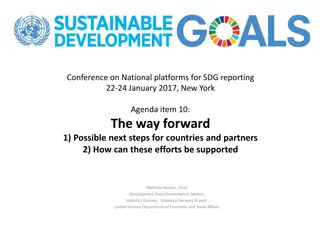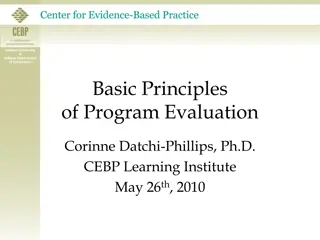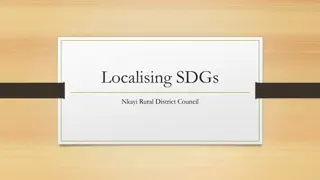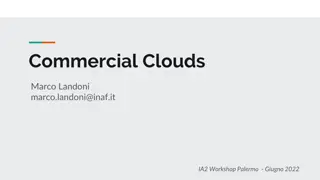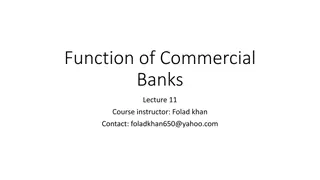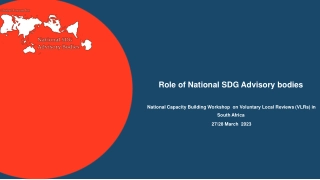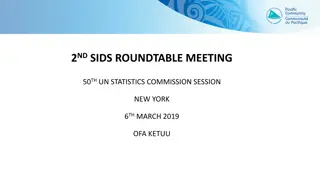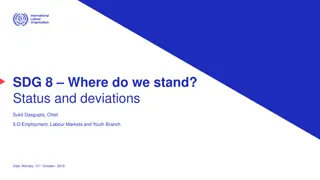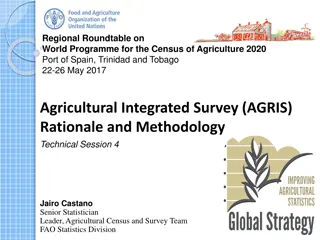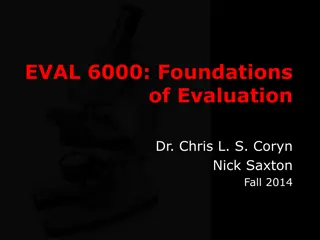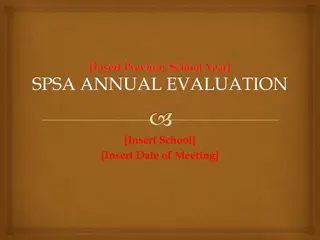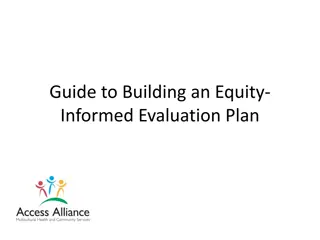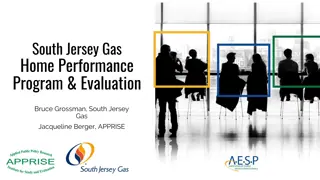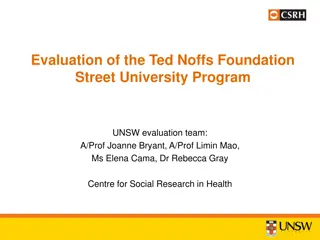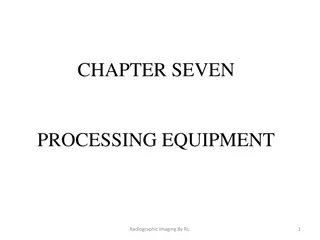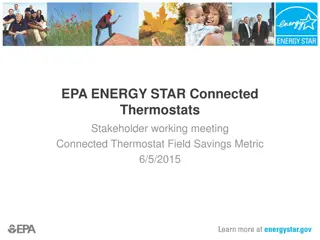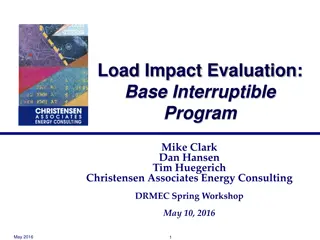Evaluation of 2015 SDG&E Commercial Thermostat Program
The evaluation of the 2015 SDG&E Commercial Thermostat Program presented at the 2016 PLMA Spring Conference Smart Thermostat Interest Group Workshop provides a detailed overview, methodology, results, enrollment forecasts, additional findings, and recommendations. The program targeted small and medium businesses and residential customers in San Diego Gas & Electric's service territory, utilizing smart thermostat installations for AC load control and demand response. Ex-post analysis showed positive impacts with an average event day impact of 2.49 kW per customer and 0.27 kW per thermostat for commercial customers.
Download Presentation

Please find below an Image/Link to download the presentation.
The content on the website is provided AS IS for your information and personal use only. It may not be sold, licensed, or shared on other websites without obtaining consent from the author. Download presentation by click this link. If you encounter any issues during the download, it is possible that the publisher has removed the file from their server.
E N D
Presentation Transcript
Evaluation of 2015 SDG&E Commercial Thermostat Program 2016 PLMA Spring Conference Smart Thermostat Interest Group Workshop Prepared by: Josh Schellenberg, Principal Dan Thompson, Project Analyst May 10, 2016
Overview 1. Program Overview 2. Ex Post Methodology 3. Ex Post Results 4. Ex Ante Methodology 5. Enrollment Forecast 6. Ex Ante Results 7. Additional Findings 8. Recommendations 2
The San Diego Gas & Electric (SDG&E) Commercial Thermostat program is a growing AC load control program Smart thermostat installations are used for AC load control demand response in SDG&E s service territory 1,243 small and medium business (SMB) customers (11,292 thermostats) participated in 2015 DR events 1,079 commercially managed residential customers (1,130 thermostats) participated in 2015 DR events Two primary load control strategies: 50% cycling 4-degree setback Any participant can override the load control at any point Number of Available Dispatches Number of Actual Dispatches Hours of Availability Hours of Actual Use 72 hours 16 hours 18 events 4 events 4
Impacts were estimated using matching with difference-in- differences regression and same-day adjustment Participants Control Reference 50 The regression adjusts for differences remaining after matching. 45 40 35 Average Demand (kW) 30 25 20 15 The matching algorithm selects control customers with a similar load profile to participants. 10 5 0 1 2 3 4 5 6 7 8 9 10 11 12 13 14 15 16 17 18 19 20 21 22 23 24 Hour Ending 6
The average 2015 event day impact was 2.49 kW per customer and 0.27 kW per thermostat for commercial customers 8
The per thermostat impacts for commercial customers remained relatively constant in percent terms after the first event hour. Impact per Thermostat Impact (%) 0.40 12% 0.35 10% 0.30 Avera Per Thermostat Impact (kW) 8% 0.25 Impact (%) 0.20 6% 0.15 4% 0.10 2% 0.05 0.00 0% 3 PM 4 PM 5 PM 6 PM Hour Ending 9
The relationship between weather and impacts was not detectable given the sample sizes and consecutive events. Impact per Thermostat Mean17 0.40 90.0 Three of the four events were on consecutive days 0.35 88.0 0.30 Demand Impact (kW) 0.25 Temperature (F) 86.0 0.20 84.0 0.15 0.10 82.0 0.05 0.00 80.0 Aug 28, 2015 Sep 9, 2015 Sep 10, 2015 Event Sep 11, 2015 Average Event 10
A small number of thermostats installed in commercially-operated residences returned smaller and noisier impacts. Impact per Thermostat Mean17 0.16 86.0 0.14 85.0 0.12 84.0 Demand Impact (kW) 0.10 83.0 Temperature (F) 0.08 82.0 0.06 81.0 0.04 80.0 0.02 79.0 0.00 78.0 Aug 28, 2015 Sep 9, 2015 Sep 10, 2015 Event Sep 11, 2015 Average Event 11
The impact of the commercial thermostat program during SDG&E and CAISO system peaks were 3.02 MW and 3.44 MW, respectively SDG&E system peak September 9th Between 3 PM and 4 PM (3:43 PM) Commercial Thermostat impact: 3.02 MW CAISO system peak September 10th Between 4 PM and 5 PM (4:53 PM) Commercial Thermostat impact: 3.44 MW 12
Ex Ante impacts were calculated by combining 2015 per-thermostat impacts with Summer Saver weather sensitivity 1. Ex post estimates were developed with the key output being the average per-thermostat impact (0.27 kW) 2. Regression models were estimated that relate hourly usage to weather 3. A regression model was estimated that relates the Summer Saver 50% cycling impacts to temperatures using five years of events 4. Summer Saver impacts were predicted for the ex ante weather scenarios using the model in step 3 5. The ratio of impacts to weather observed in the Summer Saver program was applied to the per-thermostat impact (step 1) for the commercial thermostat program 14
The Commercial Thermostat program is expected to grow by 17% Commercial (CPP) Commercial (Non CPP) Residential 18,000 1,130 16,000 1,130 1,130 14,000 3,283 4,090 1,684 1,130 12,000 934 Thermostats Enrolled 10,000 8,000 6,000 11,947 11,932 11,526 11,136 4,000 2,000 0 2015 2016 2017 2018-2026 Year 16
The per-customer impacts are expected to increase ~5% The August CAISO 1-in-2 day is hotter than the August SDG&E 1-in-2 day. Impact (SDG&E) Impact (CAISO) Enrolled Thermostats 1.2 25,000 1 20,000 The per-customer impact changes over time due to small changes in the customer mix. Impact Per Customer (kW) 0.8 15,000 Enrollment 0.6 10,000 0.4 5,000 0.2 0 0 2016 2017 Year 2018-2026 18
The aggregate impacts are expected to increase by ~15% The aggregate impact changes for the same reasons as above. Impact (SDG&E) Impact (CAISO) Enrolled Thermostats 3.5 25,000 3 It also changes due to increasing enrollment. 20,000 2.5 Aggregate Impact (MW) 15,000 2 Count 1.5 10,000 1 5,000 0.5 0 0 2016 2017 Year 2018-2026 19
The aggregate ex post impacts increased while the 2017 ex ante impacts decreased from the 2014 evaluation to the 2015 evaluation Evaluation Year Aggregate Impact (MW) Thermostats Enrolled Mean17 2014 0.7 3,282 82.9 Ex Post 2015 3.1 12,422 84.1 2014 3.41 19,973 75.6 Ex Ante (2017) 2015 2.84 16,346 74.9 Aggregate ex post impacts increased by nearly 4.5 times from 2014 to 2015 due to: 378% increase in enrolled thermostats 1.2 degree increase in average event temperatures Ex Ante estimates for 2017 fell from the 2014 to the 2015 evaluation due to: 18% drop in projected enrollment 0.7 degree drop in average temperatures 20
2015 impacts per thermostat throughout the event hours were very similar for each load control strategy 4-Degree Setback 50% Cycling 0.40 0.34 0.34 0.35 0.30 Impact Per Thermostat (kW) 0.25 0.24 0.24 0.25 0.24 0.21 0.21 0.20 0.19 0.20 0.15 0.10 0.05 0.00 2-3 PM 3-4 PM 4-5 PM Event Hour 5-6 PM Overall 22
Smart thermostats delivered the largest impacts for retail customers; hotels underperformed relative to other industries 0.5 84 cust There variance in performance across industries is high. 0.4 545 cust 140 cust Per Thermostat Impact (kW) 0.3 1,243 cust 247 cust 0.2 0.1 75 cust 0 Hotels Institutional Offices, Finance, Restaurants, Services Retail Stores Schools All Industries Industry 23
Energy savings ranged from 2% to 4% of whole-building electricity usage, 1.7 kWh per day per thermostat (620 kWh per year) Participant Count Regression-Estimated Reference Participant 95% Confidence Interval 600 2000 1800 500 1600 Average Daily Consumption (kWh) 1400 400 Count (Customers) 1200 300 1000 800 200 600 400 100 200 0 0 1 2 3 4 5 6 7 8 9 10 11 12 Months Since Installation 24
Energy savings in the peak period (2-6 PM) during the summer on non- event weekdays by industry DR Impact Total Impact 0.6 545 cust 0.5 84 cust 247 cust 0.4 140 cust Impact (kW) 0.3 0.2 75 cust 0.1 0 Hotels Institutional Offices, Finance, Restaurants, Services Industry Retail Stores Schools 25
Discussion 26
For comments or questions, contact: Josh Schellenberg Principal jschellenberg@nexant.com Dan Thompson Project Analyst dthompson@nexant.com Nexant, Inc. 101 Second St., 10th Floor San Francisco, CA 94105 415-369-1000 27


